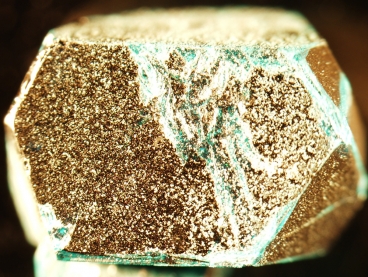Dec
21
A Third Kind of Magnetism Proven
December 21, 2012 | 1 Comment
MIT professor of physics Young Lee said, “We’re showing that there is a third fundamental state for magnetism.”
The experimental work shows the existence of this new state, called a quantum spin liquid (QSL). The MIT team published this week in the journal Nature, with Lee as the senior author and Tianheng Han, who earned his PhD in physics at MIT earlier this year, as lead author.
The QSL is shown in a solid crystal, but its magnetic state is described as liquid: Unlike the other two kinds of magnetism, the magnetic orientations of the individual particles within it fluctuate constantly, resembling the constant motion of molecules within a true liquid.
Of the other magnetisms, ferromagnetism – the simple magnetism of a bar magnet or compass needle – has been known for centuries. The second type of magnetism, antiferromagnetism is when the magnetic fields of the ions within a metal or alloy cancel each other out. In both cases, the materials become magnetic only when cooled below a certain critical temperature.
The makes QSL a very interesting and curious phenomena. What the possibilities can be are just sparks for imaginations for now.
Lee begins the explanation with noting there is no static order to the magnetic orientations, known as magnetic moments, within the new crystal material, “But there is a strong interaction between them, and due to quantum effects, they don’t lock in place.”
The third magnetic state idea goes back to Philip Anderson, a leading theorist who first proposed the concept in 1987, saying that this state could be relevant to high-temperature superconductors, Lee says. “Ever since then, physicists have wanted to make such a state,” he adds. “It’s only in the past few years that we’ve made progress.”
Although it is extremely difficult to measure, or prove the existence of this exotic state, Lee says, “this is one of the strongest experimental data sets out there that [does] this. What used to just be in theorists’ models is a real physical system.”
The magnetic material itself is a crystal of a mineral called herbertsmithite. Lee and his colleagues first succeeded in making a large, pure crystal of this material last year – a process that took 10 months – and have since been studying its properties in detail.
“This was a multidisciplinary collaboration, with physicists and chemists,” Lee explains. “You need both … to synthesize the material and study it with advanced physics techniques. Theorists were also crucial to this.”
There is also an addition, through its experiments, the team made a significant discovery. Lee said they found a state with fractionalized excitations, which had been predicted by some theorists but was a highly controversial idea. While most matter has discrete quantum states whose changes are expressed as whole numbers, this QSL material exhibits fractional quantum states. In fact, the researchers found that these excited states, called spinons, form a continuum. This observation, they say in their Nature paper, is “a remarkable first.”
To measure this state, the team used a technique called neutron scattering, which is Lee’s specialty. To actually carry out the measurements, they used a neutron spectrometer at the National Institute of Standards and Technology (NIST) in Gaithersburg, Md.
The results, Lee says, are “really strong evidence of this fractionalization” of the spin states. “That’s a fundamental theoretical prediction for spin liquids that we are seeing in a clear and detailed way for the first time.”
Lee points out it may take a long time to translate this “very fundamental research” into practical applications. The work could possibly lead to advances in data storage or communications, he says – perhaps using an exotic quantum phenomenon called long-range entanglement, in which two widely separated particles can instantaneously influence each other’s states. The findings could also bear on research into high-temperature superconductors, and could ultimately lead to new developments in that field, he says.
“We have to get a more comprehensive understanding of the big picture,” Lee says. “There is no theory that describes everything that we’re seeing.”
The project involves others worth noting, including J.S. Helton of NIST, research scientist Shaoyan Chu of MIT’s Center for Materials Science and Engineering, MIT chemistry professor Daniel Nocera, Jose Rodriguez-Rivera of NIST and the University of Maryland, and Colin Broholm of Johns Hopkins University.
The team’s work was no simple task and follows ideas that have been circulating for more than 20 years. The results crack open the study of quantum entanglement in many-body systems. Where that could lead is another exercise in imagination for more new ideas.
The work is a kind of threshold of a doorway into the unknown where ideas rule until experiments take us to conclusions. There are going to be some really exciting conclusions to come. Lets hope they’re not 20 years apart anymore.
Thanks to David Chandler for the best press release seen in a very long time – Good Work.
Comments
1 Comment so far



actually, the use for it is quantum entanglement communication. If it is not fixed, you should be able to take a part of the crystal, put it in a faraday cage, and use it to receive a change of state of the other halfs surface.